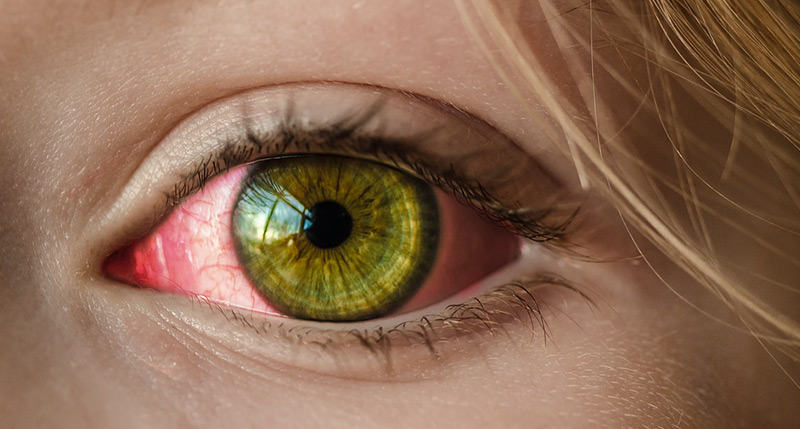Back to School Tip: Prevent Pink Eye (Conjunctivitis)
Now that kids are back in school, they’re around lots of other kids–and lots of other kids’ germs. Viruses and bacteria are present on objects kids touch every day, including door handles, keyboards, tablets, railings, restroom facilities, desks, playground equipment, pencils and art supplies.
When you consider how many times students touch these objects per day and that, on average, humans touch our faces hundreds of times per day, you can understand how viruses and bacteria quickly spread from student to student. This means an increased risk of infectious diseases, including the most common eye infection in school-age children: conjunctivitis, also known as “pink eye.”
What causes Conjunctivitis (Pink Eye)?
Conjunctivitis is a swelling or inflammation of the thin, transparent layer of eye tissue that covers the white part of the eye, known as the conjunctiva.
The infection can affect one or both eyes. Depending on its cause, conjunctivitis can be highly contagious and spread very easily. Fortunately, it’s usually a minor infection of the eye, though if not treated it can develop into a more severe condition.
Conjunctivitis is typically either viral or bacterial in origin. Both are contagious conditions; the viral version is highly contagious and spreads readily from person to person.
Bacterial conjunctivitis is most commonly the result of a staph or strep bacterial infection in the eye, often originating in a person’s own respiratory system. It can be spread through physical contact with an infected person, touching the eyes and face with unclean hands, or by sharing contaminated cosmetic products including mascara or eyeliner. Improperly cleaned contact lenses or cases can also cause bacterial pink eye.
Viral conjunctivitis is highly contagious and is often caused by the same viruses involved in the common cold. Because cold viruses spread readily, viral conjunctivitis is quickly spread through sneezing, coughing or otherwise infecting one’s face or eyes with the virus from unwashed hands or contact with respiratory droplets from an infected individual.
Conjunctivitis can also be caused by allergens or chemical exposure to the eyes, but these conditions—though painful and irritating to the individual suffering with them–are not contagious to others.
What are the symptoms of Conjunctivitis?
It’s known as Pink Eye for a reason: If you or your child contracts conjunctivitis, you will likely have a pink, irritated discoloration of the whites of one or both eyes. In addition, you may exhibit these symptoms:
- Burning or itching sensation in the affected eye or eyes
- Thick pus or discharge coming from the eye or eyes
- A gritty feeling as if a foreign body is in the eye
- Swelling of the eyelids
- Excessive tearing
- An increase in light sensitivity
How is Conjunctivitis treated?
If you suspect you or your child have conjunctivitis, schedule an appointment with your optometrist immediately. If you are diagnosed with the condition, treatment is very effective. The goals of treatment including decreasing discomfort and irritation in the eye, reducing the length of the infection and preventing its spread.
In the case of bacterial conjunctivitis, the patient will be prescribed antibiotic eye ointment or eye drops. It’s very important for the infected patient to continue with the treatment for the entire course of antibiotics.
For viral conjunctivitis, as with the common cold virus, antibiotics aren’t effective in eliminating the infection. A virus has to run its course, which can take several weeks. For this type of conjunctivitis, your optometrist will recommend treatments that can help relieve the discomfort of the condition, including warm or cool compresses for the eye area, artificial tears and sometimes if the infection is severe, steroidal eye drops to reduce the inflammation.
If you’re a contact lens wearer, it is typically recommended for you to stop wearing your contact lenses while a conjunctivitis infection is present. You should discuss your contact lens protocol with your optometrist.
How can I prevent contracting Conjunctivitis?
- Wash your hands often and thoroughly.
- Resist the urge to touch your eyes with your hands.
- Never share makeup, eye drops or lotions applied near the eyes.
- Don’t share pillowcases, washcloths or towels with anyone else.
- Never share contact lenses, contact lens cases or solutions with another person.
- Wear safety goggles in environments where you’ll be exposed to chemicals.
- Protect your eyes during windy days and in dusty conditions.
If you suspect you may have a conjunctivitis infection, see your optometrist so he or she can prescribe the right treatment for the type of conjunctivitis to prevent the condition from becoming more severe and to start you on the path toward healing.

Recent Comments